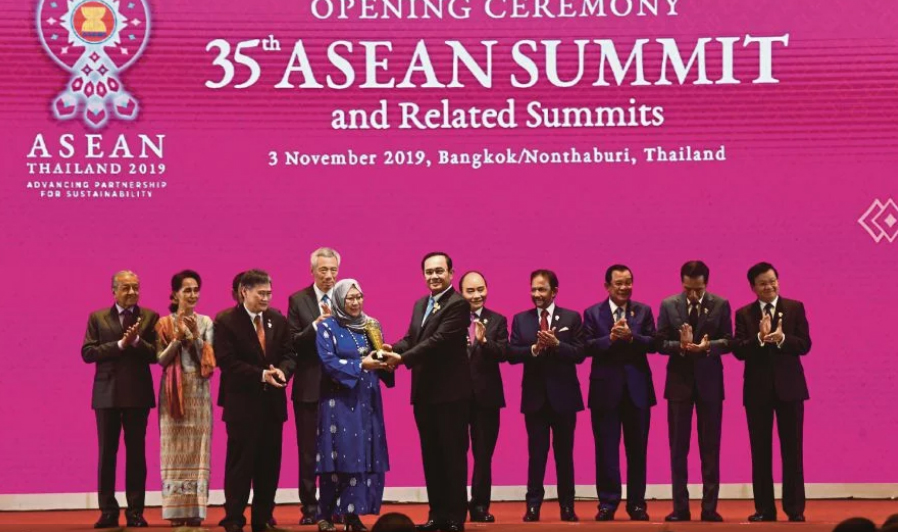IN a previous article, the author explored the background, scope and key issues that defined the trilateral relationship between Asean, Australia and New Zealand.
Also highlighted was the role of Track 1.5 and Track 2 diplomacy in charting the growth and evolution of this relationship.
This article, will briefly touch on some challenges that could hamstring greater cooperation, concluding with observations and suggestions for its future directions.
Despite the depth and good progress of the trilateral relationship, stakeholders shouldn’t underestimate the presence of still influential voices — especially in Asean and Australia — that argue against overestimating and overinvesting in the relationship.
Some from the former are still suspicious of Australia being a longstanding treaty ally of the United States, and its current involvement in several major US-led initiatives in the region.
Some question the actual benefit of engaging so comprehensively with both Australia and New Zealand when there is seemingly more to be gained in dealing with other Dialogue Partners, some of whom have deeper pockets and more proactive policies when it comes to infrastructure development.
For the latter, there is still scepticism of Asean’s ultimate value to Australia’s interests in the region — with some arguing that it is an inconsequential talk shop at best. Or, more worryingly, a multilateral grouping increasingly subservient to China’s influence.
There is also the argument that despite the long relationship, both Dialogue Partners do more meaningful bilateral business and trade with Singapore, Thailand, and Malaysia when compared to the rest of Asean combined.
While there may be some basis to these scepticisms, this author posits that ultimately, there is more that binds us.
In some cases, there are not merely internally generated but are imposed on Asean, Australia and New Zealand by the changing realities of the wider region.
By way of an extended conclusion, the following four observations or suggestions for the future strategic directions for Asean, Australia and New Zealand that stakeholders should keep in mind.
First, the trilateral relationship needs to grow beyond trade and concerns over the evolving regional architecture and major power competition.
Emerging, non-traditional issues previously raised include humanitarian assistance and disaster relief, violent extremism, displacement, pandemics and environmental concerns. Many of these issues do not recognise national or legal boundaries.
While Asean has come a long way in identifying and managing these challenges, there are still legacy issues that hamper more effective responses. It is Asean’s Dialogue Partners that can, and have, played a key role in providing the appropriate resources and guidance in bringing different interests together.
Both Australia and New Zealand have been active in this regard and should consider further scaling up their involvement.
Second, Asean member states need to demonstrate their own determination to uphold Asean centrality. The impression that Asean is merely paying lip service to the concept is damaging to its relationships with Dialogue Partners, especially Australia and New Zealand, who take the Asean centrality seriously.
Each member state will have to place Asean at the centre of their decisionmaking — something that is still lacking. Asean should not take the commitment of its Dialogue Partners for granted. This has been said many times before, but it needs to be reemphasised because there seems to be no real change to perceptions.
There needs to be further expletory initiatives on strengthening the role, scope and capacity of the Asean Secretariat while slowly expanding the “Asean-minus X” model of decisionmaking, already utilised in some Asean mechanisms, throughout the grouping. It will not be an easy process but it needs to start somewhere.
Third, Australia and New Zealand need to be more selective about their engagement with Asean. Diplomatic niceties aside, resources are finite and they cannot afford to disperse them, like how some of Asean’s other Dialogue Partners do. This means some potentially painful decisions on whether it is worthwhile to engage with Asean as a whole on certain issues.
When some member states are just not capable or interested to give certain issues the consideration expected by others, or worse, when some actively act to frustrate the wishes of the majority of, then a different approach must be explored.
Perhaps more tangible results will come with a more targeted engagement approach — bilaterally or even mini-laterally. One only needs to look at initiatives within Asean to see that that real traction is often found in the bilateral or mini-lateral ventures between member states. In fact, some Asean members too should start taking heed of this and act accordingly.
Fourth, all stakeholders need to engage the emerging young talent from our respective regions and countries. There is a growing pool of those who are well connected, travelled and possess unique insights into the issues they feel are of seminal importance to their generation. Many are also more ready to explore out-of-the-box solutions.
The inclusion of emerging talent, leaders, and even junior bureaucrats is a growing trend in Asean-related events, including at the Track 1.5 and Track 2 levels.
This should be further encouraged and supported. The inclusion of such emerging talent at the Asean Australia New Zealand Dialogue over the last couple years for example, has seen great feedback from all stakeholders.
True, many are still raw and optimistic. But it is this precisely these aspirational tendencies that will drive us to achieve greater levels of cooperation.
They need to be moulded and guided, not muzzled into submission.
This article first appeared in the New Straits Times on November 25, 2019





